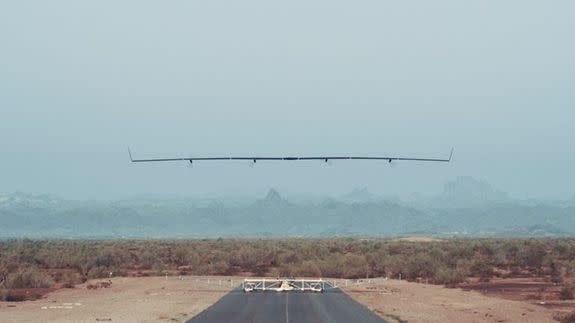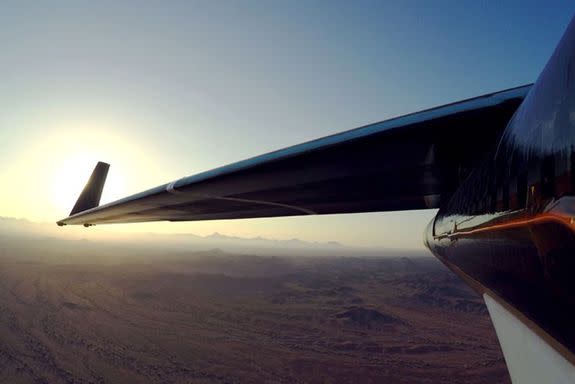Report: Facebook drone under investigation after 'structural failure'

Facebook's drive to digitally connect the whole world may have hit a road bump.
The U.S. National Transportation Safety Board (NTSB) is reportedly investigating a June accident involving one of Facebook's massive drones.
Known as Aquila, the unmanned aircraft is part of Internet.org, Facebook's at times controversial project to bring internet to remote communities.
SEE ALSO: Facebook’s $200MM satellite wouldn’t have been enough to bring Sub Saharan Africa online
Bloomberg reported that a "structural failure" occurred during the drone's first test flight on June 28. The NTSB told the outlet the incident occurred at 7:43 a.m. local time near Yuma, Arizona, but caused no damage on the ground.
The NTSB has been contacted by Mashable for further details and clarification.

Image: Facebook
A NTSB investigation is in itself unsurprising. The board requires operators of unmanned aircraft to report any accident, and almost all accidents are investigated if the drone weighs more than 300 pounds and sustains substantial damage, requiring a major repair.
Facebook presented a very rosy picture of its initial test. On July 21, Jay Parikh, global head of engineering and infrastructure at Facebook, addressed Aquila's maiden test flight in a blog post, claiming it out-performed expectations.
"This first functional check was a low-altitude flight, and it was so successful that we ended up flying Aquila for more than 90 minutes — three times longer than originally planned," he wrote.
In another July post about early lessons from the flight, two Facebook engineers mentioned that a structural failure was encountered just before landing, but did not expand on the issue.
The post explained that thanks to its low weight, the aircraft does not include "traditional takeoff and landing gear."
It also has a wing span on par with a Boeing 737, they noted, saying "There is little to no precedent to guide us as we continue to optimize [sic] Aquila's performance."
Commenting on Bloomberg's report, a Facebook spokesperson told Mashable the company was happy with the first test flight, which had "no major unexpected results."
"We have already learned a lot from the results of this flight test and will continue to learn from all the future flight tests we plan to run," he said.
As Mashable reported at the time, the company hopes the drone will eventually fly for up to three months powered by solar energy at altitudes of between 60,000 to 90,000 feet.
And of course, all while beaming down broadband internet.
UPDATE: Nov. 22, 2016, 4:19 p.m. AEDT Facebook statement added.

 Yahoo News
Yahoo News 